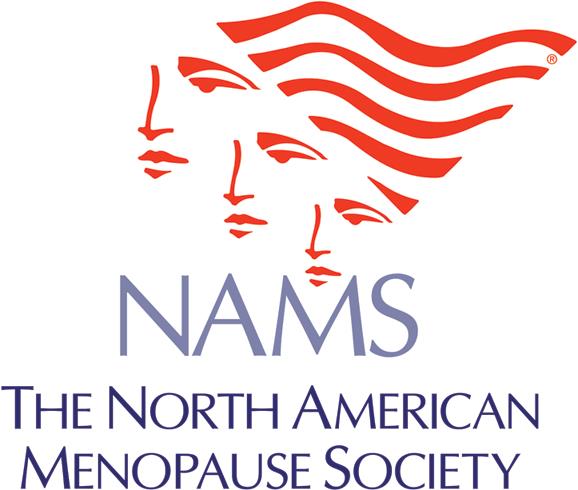By: Red Hot Mamas
Published: January 5, 2016
DHEA Improves Vaginal Discomfort After Menopause
New phase III trial takes this estrogen alternative a step closer to approval
CLEVELAND, Ohio (January 5, 2016)—A new phase III trial with positive results is taking intravaginal
DHEA a step closer to governmental approval. The formulation could provide women who cannot or do
not wish to use intravaginal estrogen with an effective vaginal alternative for easing vaginal symptoms
and pain with sex after menopause. The trial results were published online today in Menopause, the
journal of The North American Menopause Society.
Without hormonal treatment after menopause, vaginal tissues atrophy, the lining thins and secretes less
and less fluid, and the pH becomes more alkaline, which leads to discomfort with sex as well as increased
susceptibility to vaginal infections and urinary problems for many women. In fact, 84% of the women in
this clinical trial had moderate to severe vaginal dryness.
But compared with the 157 women who used a placebo, the 325 women who used the daily 0.5% DHEA
(6.5 mg) ovules enjoyed significant improvements after 12 weeks. Their scores on a scale of 0 to 3 for
pain with sex dropped a significant 0.36 points more than for the women who used the placebo. The
women who used DHEA also had significantly less thinning of the vaginal lining, showing an 8.44%
greater increase in lining cells called “superficial cells” and a 27.7% greater decrease in parabasal cells,
the immature precursors of the superficial cells. The DHEA users’ moderate to severe vaginal dryness
also improved by a significant 0.27 points more (also on a scale of 0 to 3). Gynecologists who examined
the women saw 86% to 121% better improvements in vaginal secretions, integrity of the vaginal lining,
lining thickness, and tissue color in the women who used DHEA, and their vaginal pH shifted 0.66 points
more toward acidity.
Moisturizers and lubricants as nonhormonal alternatives to intravaginal estrogen can temporarily ease
pain with sex and provide moisture, but they cannot correct the physical changes that produce the
symptoms. However, DHEA (also known as dehydroepiandrosterone), a hormonal precursor of estrogens
and androgens, does produce improvements.
“Although this medication is considered ‘hormonal,’ the mechanism appears to be primarily local with
minimal side effects beyond vaginal discharge from the suppository,” explains NAMS Executive Director
JoAnn V. Pinkerton MD, NCMP. “DHEA is transformed into estrogens within the parabasal cells, prompting the maturation process that ultimately transforms them into superficial cells. Its action seems
to be entirely within the cells, and no significant amount of sex hormone gets released into the circulation.
“That means,” she added, “that intravaginal DHEA avoids the raised hormone levels that might stimulate
breast tissue or the lining of the uterus, which are concerns for women at risk of estrogen sensitive
cancers, or cancer recurrence, in these organs] Women who have been treated for these cancers often have
severe vulvovaginal symptoms and and need safe and effective treatment options.” Notably, this therapy
has not been tested in patient at risk or with a history of breast cancer. And of course, the use of any type
of hormonal treatment options whether it be this new DHEA suppository if it receives FDA approval or
FDA approved and available low dose vaginal estrogens and systemic ospemifene (Osphena), always
need to be discussed with their oncologist.
With results from nearly 500 women who participated in this prospective, randomized, double-blind,
placebo-controlled trial, EndoCeutics has reached the number of study subjects the International
Conference on Harmonisation of Technical Requirements for Registration of Pharmaceutics for Human
Use and the FDA require before this DHEA vaginal suppository or “ovule” (Prasterone) can be approved.
The article detailing the trial results, “Efficacy of intravaginal dehydroepiandrosterone (DHEA) on
moderate to severe dyspareunia and vaginal dryness, symptoms of vulvovaginal atrophy, and of the
genitourinary syndrome of menopause,” will be published in the March 2016 print edition of Menopause.
Founded in 1989, The North American Menopause Society (NAMS) is North America’s leading
nonprofit organization dedicated to promoting the health and quality of life of all women during midlife
and beyond through an understanding of menopause and healthy aging. Its multidisciplinary membership
of 2,000 leaders in the field—including clinical and basic science experts from medicine, nursing,
sociology, psychology, nutrition, anthropology, epidemiology, pharmacy, and education—makes NAMS
uniquely qualified to serve as the definitive resource for health professionals and the public for accurate,
unbiased information about menopause and healthy aging. To learn more about NAMS, visit
www.menopause.org.
Source: http://www.menopause.org/docs/default-source/2016-docs/intravaginal-dhea.pdf
 Red Hot Mamas In Charge of Change.
Red Hot Mamas In Charge of Change.




